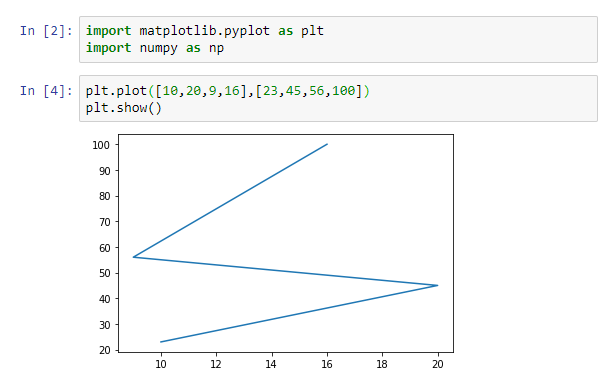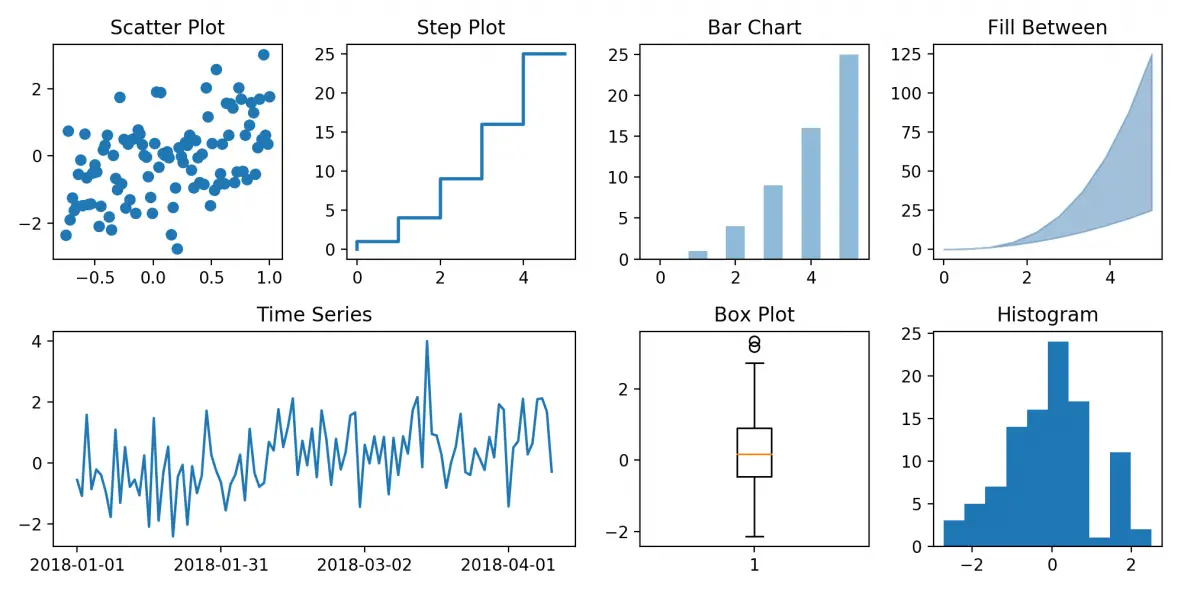
By using pyplot, we can create plotting easily and control font properties, line controls, formatting axes, etc. Matplotlib is a widely used Python based library it is used to create 2d Plots and graphs easily through Python script, it got another name as a pyplot. Plots enable us to visualize data in a pictorial or graphical representation. Matplotlib is a Python library used for plotting.
Matplotlib Code Chunk Automatically
Otherwise the user will need to type plt.show() everytime a new plot is created. %matplotlib inline is run so that the plot will show underneath the code chunk automatically when it is executed. PyPlot contains a range of commands required to create and edit plots.
As every dimension in generated graphs is adjusted by the library, it can be quite difficult to visualize data in a proper format.Matplotlib Tutorial: Python Plotting. Lets see how we can generate a scatter plot from matplotlib.Matplotlib Figsize is a method from the pyplot class which allows you to change the dimensions of the graph. Matplotlib's highly customizable code structure makes it a great guide to other plotting libraries.
A handy tip is that whenever matplotlib is executed, the output will always include a text output that can be very visually unappealing. However, the step to presenting analyses, results or insights can be a. Humans are very visual creatures: we understand things better when we see things visualized.
plt.scatter() will give us a scatter plot of the data we pass in as the initial arguments. It can convey an array of information to the user without much work (as demonstrated below) Its compact pyplot interface is similar to.The dataset used is the Bike Sharing Dataset from the UCI Machine Learning Repository.A scatter plot is one of the most influential, informative, and versatile plots in your arsenal.
This corresponds to a 15∗10 (length∗width) plot. plt.rcParams = allows to control the size of the entire plot. This is a quick and easy method to group data in a visual format.Plt.rcParams = Spring = plt.scatter('temp', 'cnt', data=day=1], marker='o', color='green')Summer = plt.scatter('temp', 'cnt', data=day=2], marker='o', color='orange')Autumn = plt.scatter('temp', 'cnt', data=day=3], marker='o', color='brown')Winter = plt.scatter('temp', 'cnt', data=day=4], marker='o', color='blue')Plt.legend(handles=(spring,summer,autumn,winter),Labels=('Spring', 'Summer', 'Fall/Autumn', 'Winter'),Bbox_to_anchor=(1, 0.7), loc=2, borderaxespad=1.,Plt.title('Bike Rentals at Different Temperatures\nBy Season', fontdict=fontdict, color="black")Plt.xlabel("Normalized temperature", fontdict=fontdictx)Plt.ylabel("Count of Total Rental Bikes", fontdict=fontdicty) Because we passed a string - 'season' which is a column of the dataframe day, the colors correspond to the different seasons. c determines the colors of the data points.
Marker and color arguments correspond to using a 'o' to visually represent a data point and the respective color of that marker. This is seen again in the data argument in which it has been subsetted to correspond to a single season. There are now 4 plt.scatter() function calls corresponding to one of the four seasons. Fontdict for the title, fontdictx for the x-axis and fontdicty for the y-axis.
These 3 arguments are used in tandem to correspond to the location of the legend click on the link at the start of this sentence to find out the nature of these arguments.Now we can distinguish the seasons to check for more underlying information. Bbox_to_anchor=(1, 0.7), loc=2, borderaxespad=1. Scatterpoints are the size of each marker for the scatter plot. The first two arguments are handles: the actual plots to be represented in the legend and labels: the names corresponding to each plot that will be shown in the legend.

For example in ax1 it corresponds to the 1st plot of the figure (index starts at 1 in the upper left corner and increases to the right.) The arguments correspond to nrows, ncols, index. fig.add_subplot() will be repeated 4 times to correspond to a respective season. plt.figure() will be used to create an empty plot canvas as explained before. Faceted plots can convey information in many dimensions and can reveal information that was previously hidden. Faceting is one of the most versatile techniques of data visualization.



 0 kommentar(er)
0 kommentar(er)
